Urban Technology at University of Michigan week 196
"Time to being local" and the role of digital services
If you’ve ever moved to a new city in your lifetime, think back to one of those experiences and ask yourself when—after unpacking all the boxes—you realized, “I’m a local now.” Maybe it was having the person at the corner store remember your name, when you got your library card, enrolled your child in school, or three months into a job when you could finally exhale. The number of days between arriving and feeling rooted is what you might call the “time to being local.” This semester our juniors taking UT 360: Service Design and Urban Needs tackled the challenge of helping newcomers thrive by decreasing “time to being local” in Michigan communities.
If you’re thinking, “Great, but I’m here to read about urban technology,” your head might be in a similar space to the juniors on day one of class, so let me to explain how it connects. Last year the State of Michigan appointed Hilary Doe as the nation’s first state-level Chief Growth Officer. The “growth” in question here is that of population. If you’re trying to grow population, you want to retain existing residents while attracting newcomers.
Our students, working under the leadership of Ron Bronson (featured in this newsletter previously), formed a micro think tank to create new businesses and service concepts that facilitate better “onboarding” to Michigan communities. I prefer a metaphor: Can digital services act as fertilizer to accelerate an individual’s or family’s process of growing local roots?
Here’s some news coverage by the University Record, and below the jump you’ll find more about the challenge and a recap of the three projects presented at the end of the semester. Well done, folks!
💬 Hello! This is the newsletter of the Urban Technology program at University of Michigan, in which we explore the ways that data, connectivity, computation, and automation can be harnessed to nurture and improve urban life. If you’re new here, try this short video of current students describing urban technology in their own words or this 90 second explainer video.
🌲 Onboarding: The Challenge
As a transplant to the state of Michigan myself, I found that sometimes it feels like the mitten is a little too good at keeping its own secrets. Maybe it’s that midwestern humility that I hear so much about, or another downside of the decline of local media? When I landed in Michigan it felt like everyone had a map that wasn’t available to me. Turns out, many of them did, but there was not some mythical secret atlas of Michigan. It was tacit knowledge that I didn’t yet have access to, even as someone arriving with plenty of good fortune.
Michigan is a fantastic place to live and yet it’s not the easiest place to settle into because getting to know its natural and cultural offerings or its economic opportunities is not always straightforward if you arrive without a local network. Due to this experience, I was excited to hear Hilary Doe talk about her work to grow the population of the state, including ways to assist with “talent retention.”
From Michigan’s 11,000 lakes to the countless hip hop anthems produced in Detroit, this state is a place of abundant human talent and natural resources. This is a climate haven that has every reason to be a leader in the green transition, the reshoring of the tech industry, and the broader growth of America’s innovation economy in the 21st century. To realize that potential, what if we could also make the state a place where the time to being local was very short? “Onboarding” to life here, defined as getting situated, finding opportunities, and growing or rekindling local roots, can and should be improved—it must be designed as an experience. And if you’re an urban technologist that means designing for people of all walks of life, not just highly educated professors (🙋).
🧭 Onboarding: Student Work
The outputs of this course were three design concepts that proposed ways in which Michigan might celebrate the unique qualities of its small towns, make better use of disused spaces in cities, and tout the diversity of its cultural heritage. Final projects were presented to invited guests on April 23rd at Newlab in Detroit. Here’s a recap of all three.
MittenCorps
Student team: Bella Kressaty, Dylan Shefman, Emma Moore, Matt Kish, Nate Coplan, Owen Sims.
“MittenCorps matches Michigan-educated college graduates with small and mid-sized Michigan cities whose natural setting and communities are a good fit for the desired lifestyle of newcomers.”
One thing that I appreciate about this project is how it repositions small cities as an underutilized asset because many of them possess walkable downtowns. Walkability is an indicator of low-carbon mobility options, the potential for local economic activity, and active lifestyles: in other words, it’s a determinant of thriving and sustainable communities. While it may be challenging to attract new people to small towns, it’s plausibly easier (and certainly faster) to do this than it will be to imagine retrofitting sprawling suburbs to possess the same attractive qualities.
Fourth Spaces
Student team: Aakash Narayan, Jenna Li, My Dao, Odiso Obiora, Sibora Berisha, Siya Shah, Urja Kaushik, Yichen Hu
“Fourth Spaces is a digital tool that connects local micro and small business owners through pop-ups. Our platform energizes existing spaces with added commercial activity and new income, creates an easier path for growth of micro businesses, and brings Michiganders together for novel experiences.”
This project reminds me of “Renew Australia.” Whereas Renew focuses on pairing empty spaces with cultural and small business operators to breathe new life into sleepy downtowns, Fourth Spaces suggests that existing small businesses can host micro enterprises. The result is added density of commercial and cultural activity. By centering the user journey of a micro enterprise finding space and customers, Fourth Spaces also implies that additional support such as connecting to manufacturing networks or proving information on navigating licensing and permitting could be delivered via the same platform. This assists the entrepreneurship journey for the business owners and could increase “things to do” in Michigan communities, which is good for newcomers and old timers alike.
WorldWide MI
Student Team: Audrey Tang, Devin Vowels, Enzo Mignano, Theo Berry, Ting Fong Chen
“WorldWide MI is a digital service that helps newcomers create emotional connections to their cultural roots and allows them to explore the world in their backyard.”
The team bumped up against the hegemonic taxonomies of sites like Yelp and Google Maps that are fixated on simple descriptions like “type of cuisine” and realized that these are no guarantee of authenticity. As a response, WorldWide MI provides an additional layer of discoverability for local shops and other locations by focusing on people who tell the story of “their Michigan” in the form of curated maps. Through this system, their service delivers “emotional onboarding,” which is about valuing nostalgia, emotional connection, and cultural community building just as much as basics such as housing and employment.
🖼️ Postcards from Newlab

These weeks: UT 230 and UT 360 final reviews. Hiring. First UT faculty share-out. Closing out winter semester, and queuing up the Cities Intensive. Project Snowfall commences. Now the dogwoods. 🏃

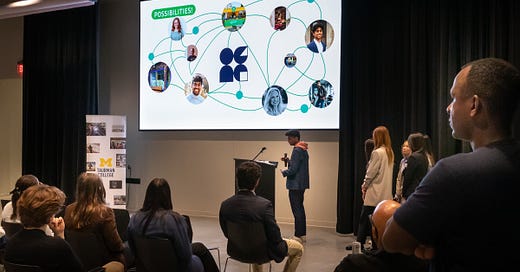

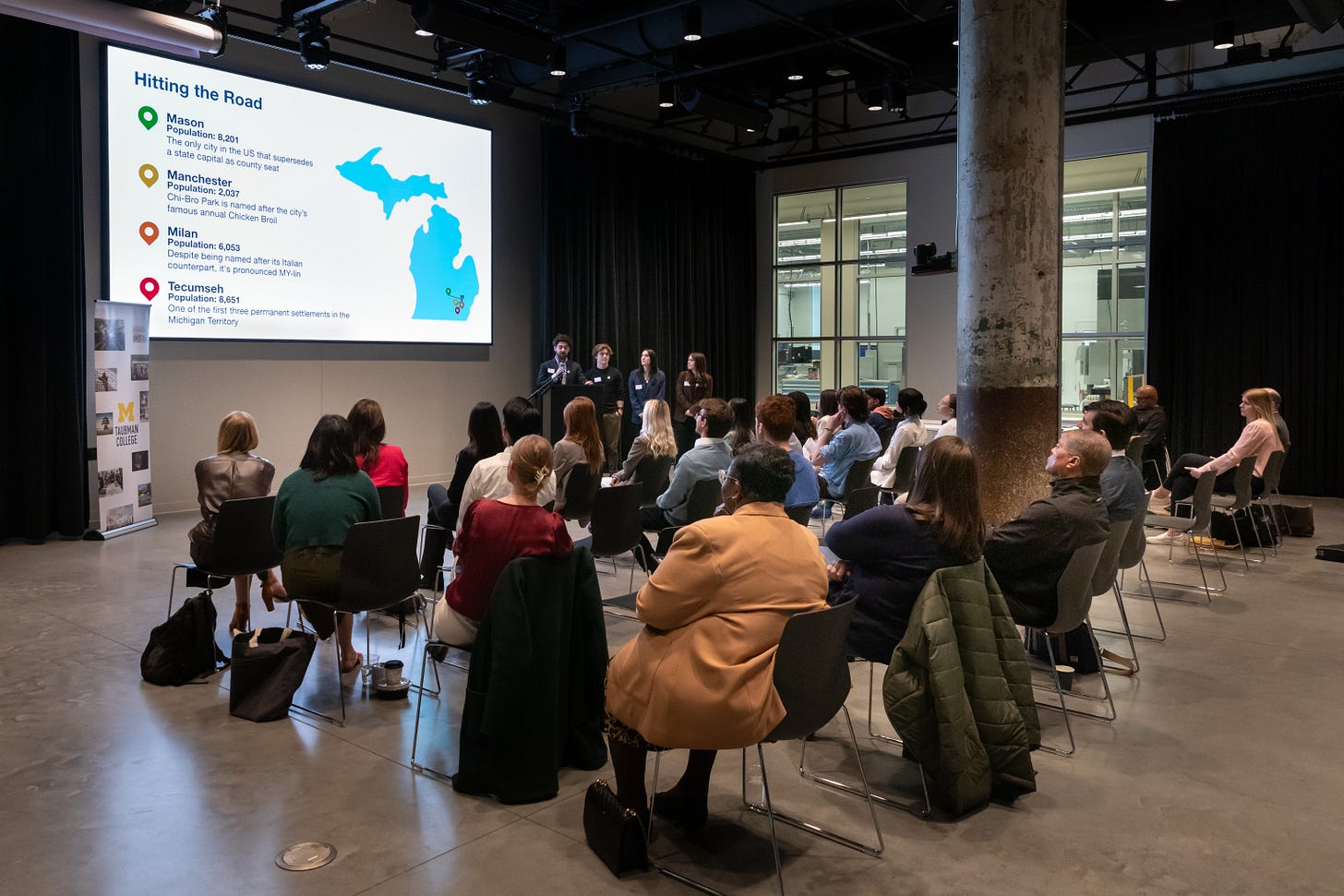

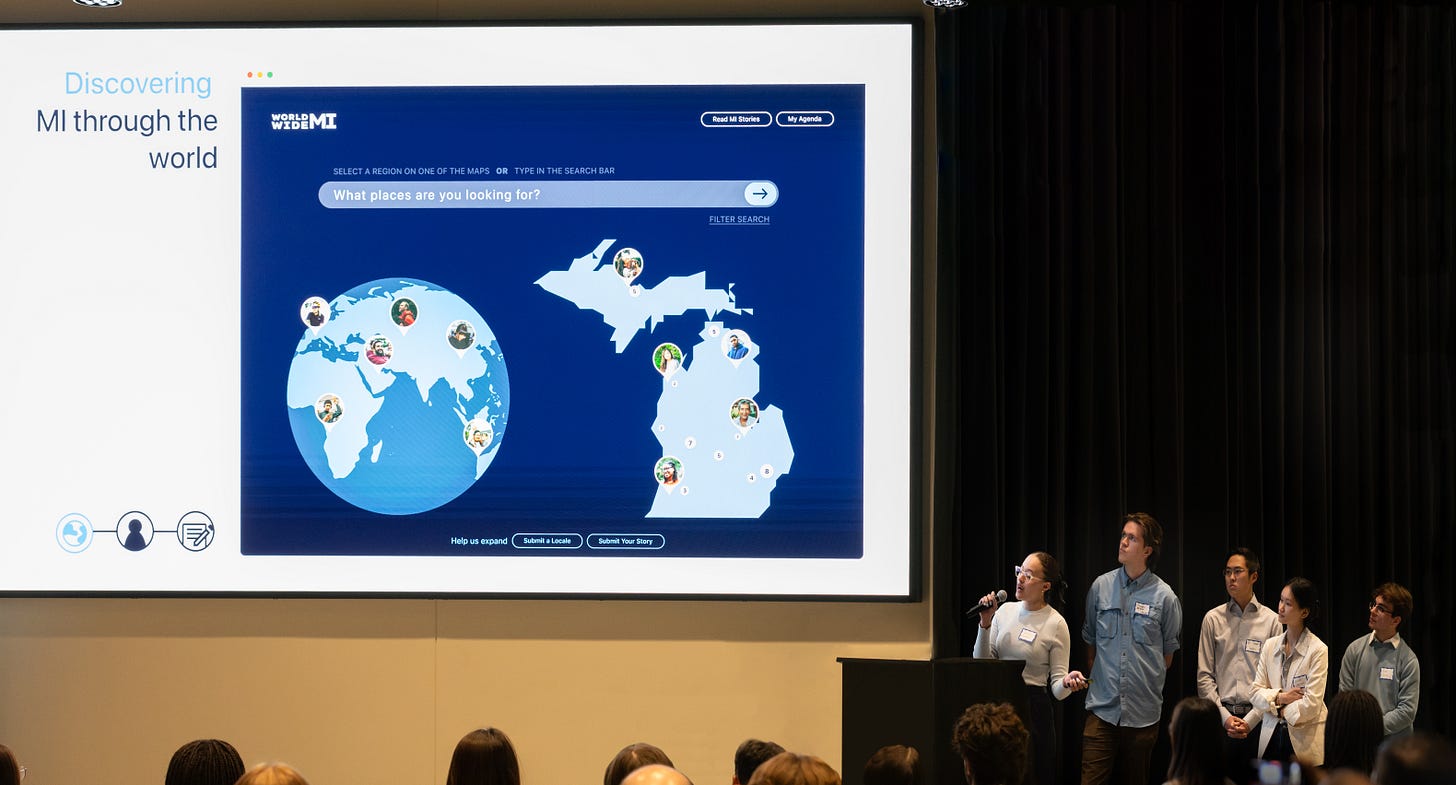
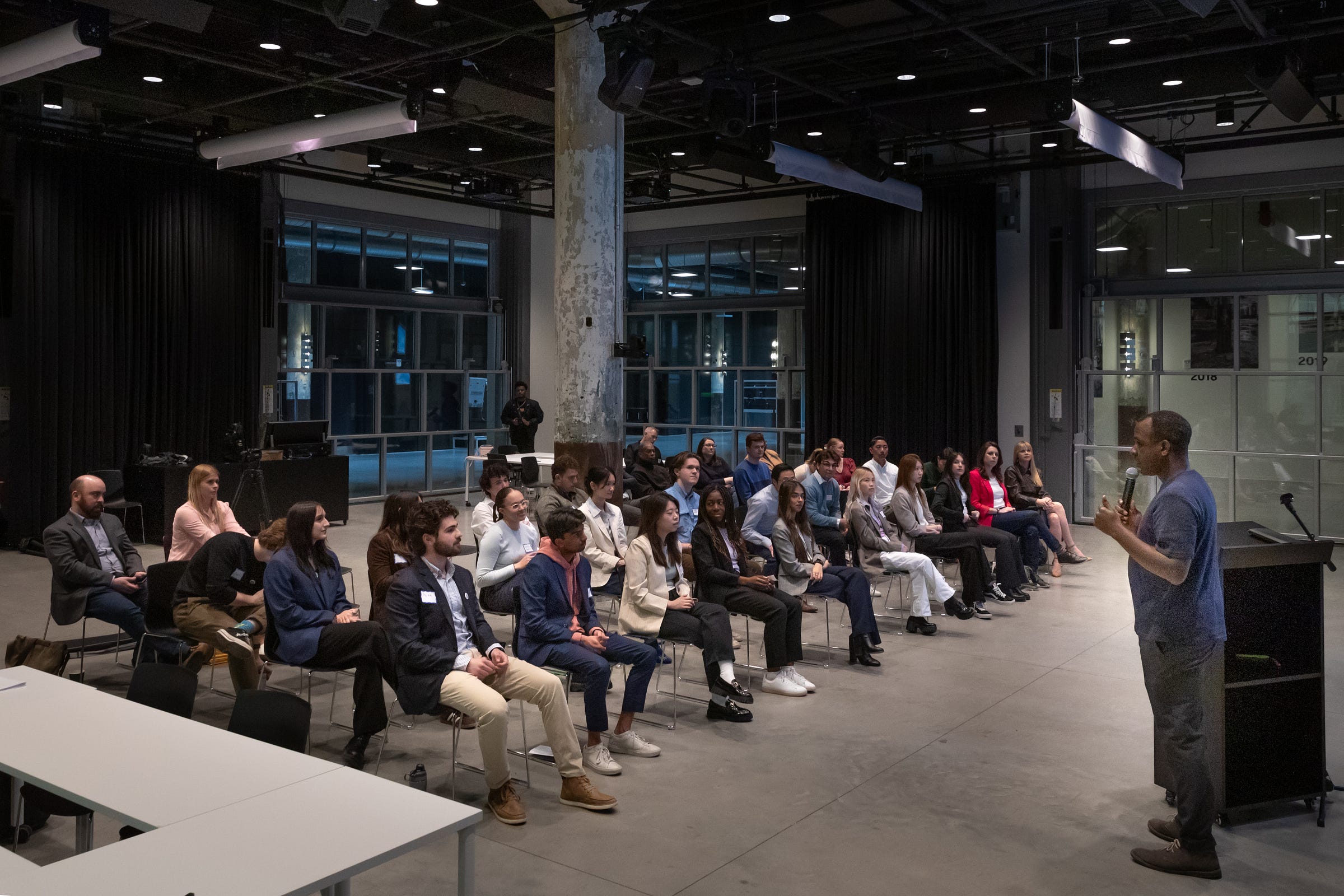
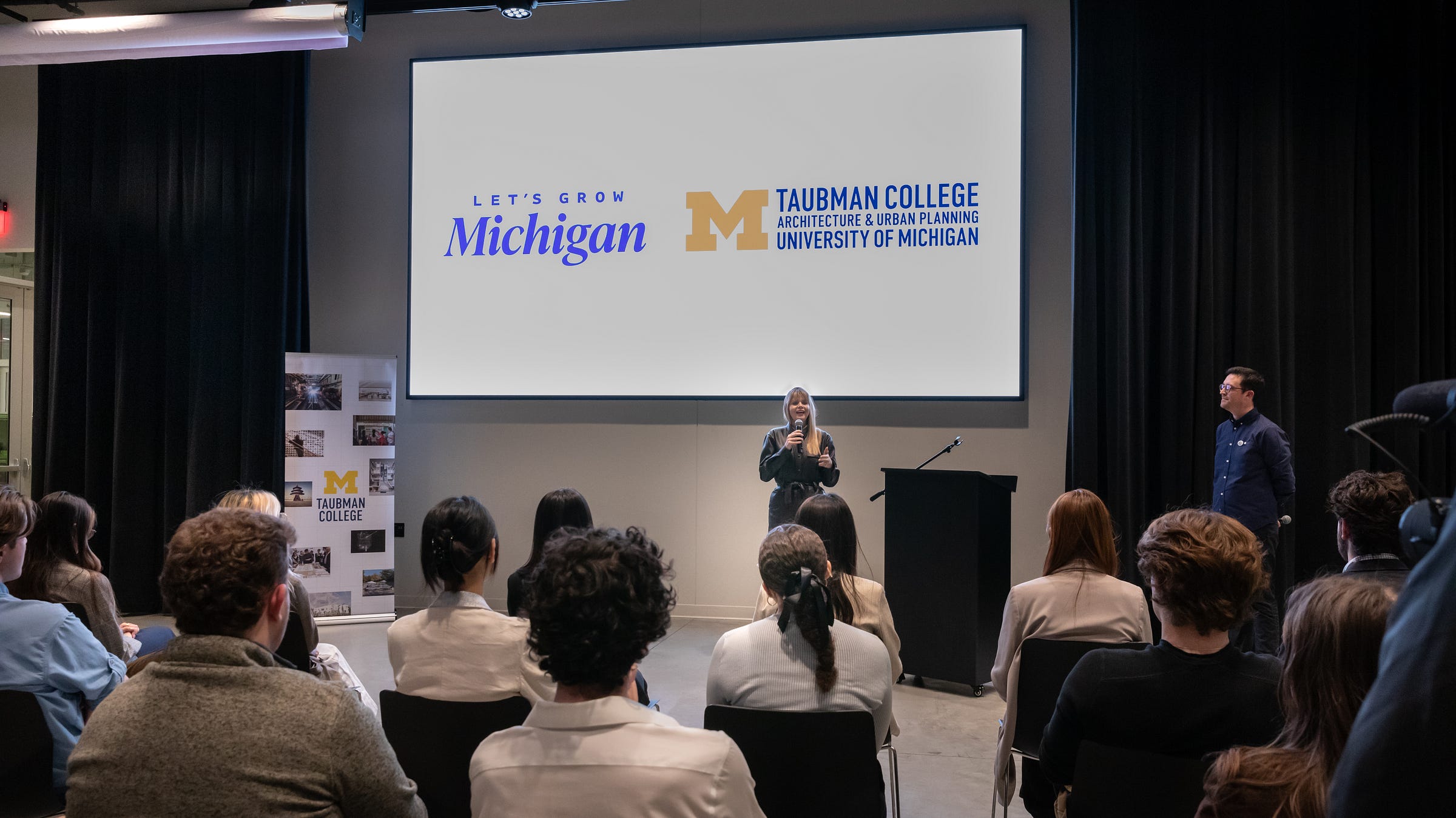
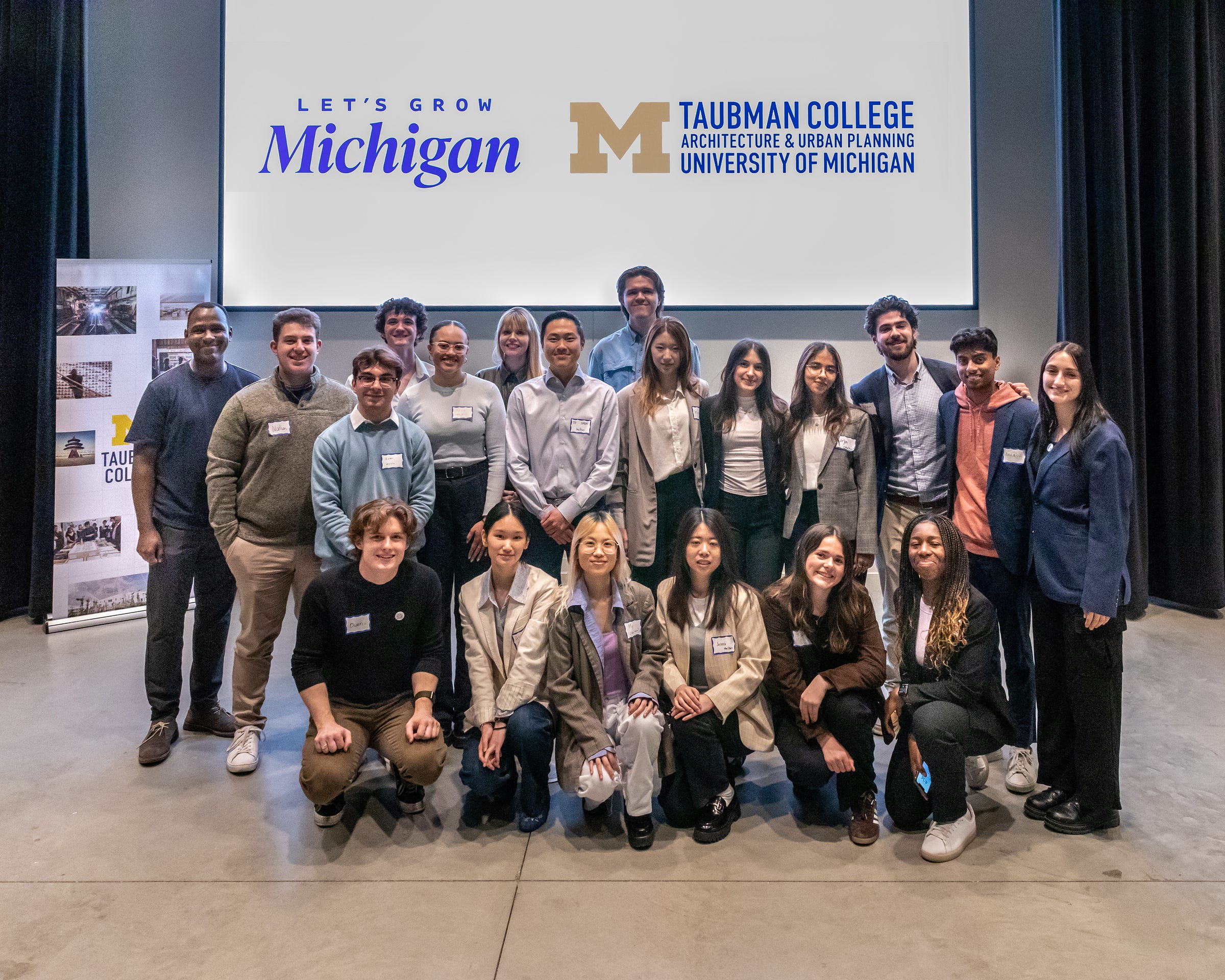
Looks like a great group of students and presentations. Congratulations!